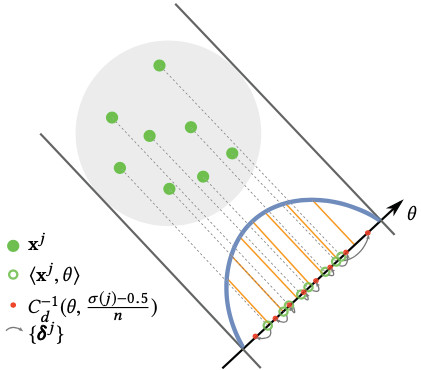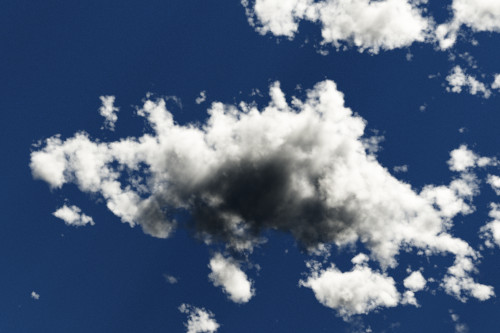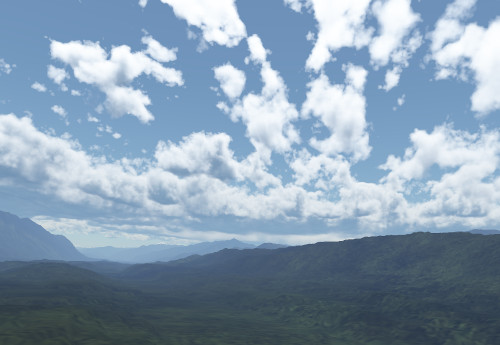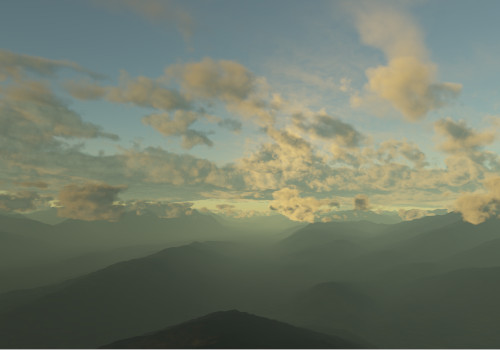 |
Volumetric Multi-View Rendering
Basile Fraboni, Antoine Webanck, Nicolas Bonneel, Jean-Claude Iehl.
Computer Graphics Forum (Eurographics 2022)
Abstract
Résumé
Rendering photo-realistic images using Monte Carlo path tracing often requires sampling a large number of paths to reach acceptable levels of noise. This is particularly the case when rendering participating media, that complexify light paths with multiple scattering events. Our goal is to accelerate the rendering of heterogeneous participating media by exploiting redundancy across views, for instance when rendering animated camera paths, motion blur in consecutive frames or multi-view images such as lenticular or light-field images. This poses a challenge as existing methods for sharing light paths across views cannot handle heterogeneous participating media and classical estimators are not optimal in this context. We address these issues by proposing three key ideas. First, we propose new volume shift mappings to transform light paths from one view to another within the recently introduced null-scattering framework, taking into account changes in density along the transformed path. Second, we generate a shared path suffix that best contributes to a subset of views, thus effectively reducing variance. Third, we introduce the multiple weighted importance sampling estimator that benefits from multiple importance sampling for combining sampling strategies, and from weighted importance sampling for reducing the variance due to non contributing strategies. We observed significant reuse when views largely overlap, with no visible bias and reduced variance compared to regular path tracing at equal time. Our method further readily integrates into existing volumetric path tracing pipelines.
|
 |
Sliced Optimal Transport Sampling
Loïs Paulin, Nicolas Bonneel, David Coeurjolly, Jean-Claude Iehl, Antoine Webanck, Mathieu Desbrun, Victor Ostromoukhov.
ACM Transactions on Graphics (Siggraph 2020)
Abstract
Résumé
In this paper, we introduce a numerical technique to generate sample distributions in arbitrary dimension for improved accuracy of Monte Carlo integration. We point out that optimal transport offers theoretical bounds on Monte Carlo integration error, and that the recently-introduced numerical framework of sliced optimal transport (SOT) allows us to formulate a novel and efficient approach to generating well-distributed high-dimensional pointsets. The resulting sliced optimal transport sampling, solely involving repeated 1D solves, is particularly simple and efficient for the common case of a uniform density over a d-dimensional ball. We also construct a volume-preserving map from a d-ball to a d-cube (generalizing the Shirley-Chiu mapping to arbitrary dimensions) to offer fast SOT sampling over d-cubes. We provide ample numerical evidence of the improvement in Monte Carlo integration accuracy that SOT sampling brings compared to existing QMC techniques, and derive a projective variant for rendering which rivals, and at times outperforms, current sampling strategies using low-discrepancy sequences or optimized samples.
|
 |
Génération procédurale d'effets atmosphériques
Procedural generation of atmospheric effects
Antoine Webanck
PhD Thesis, 16 July 2019,
Thèse de doctorat, 16 juillet 2019,
Université de Lyon
Abstract
Résumé
This thesis focuses on the synthetization of natural landscapes, and more particularly on their celestial part. The aspect of the sky is governed by plenty of atmospheric phenomena, among which clouds play a major role for they are recurrent and widespread. Even without directly considering the sky, the density of the clouds allows them to intensely modify the global illumination of a landscape. The work of this thesis thus focuses mainly on the editing, modelling and animation of cloud areas of landscape dimensions.
Because simulating the thermodynamics behind the formation of clouds hardly provides any control and the details of the simulated volume are quickly limited, we propose instead a procedural generation method. We build a lightweight cloudscape model as a hierarchy of functions. The finest details are obtained by composing procedural noises and reproduce the specific shapes of different kinds of clouds. The large-scale cloud presence is described at a high level and at different times by maps drawn by the user. These discrete maps are transformed into implicit static primitives and then interpolated by morphing, accounting for relief and winds in order to produce coherent trajectories. The implicit field obtained by mixing the interpolating primitives represents the spatiotemporal field of cloud density. Images are finally synthesized by rendering of the atmospheric participative medium according to our own implementation, executed in parallel on a graphic card.
Cette thèse s’intéresse à la synthétisation de paysages naturels, et plus particulièrement, à leur portion céleste. L’aspect du ciel est gouverné par de nombreux phénomènes atmosphériques parmi lesquels les nuages jouent un rôle prépondérant car ils sont fréquemment présents et couvrent de grandes étendues. Même sans considérer directement le ciel, la densité des nuages leur permet de modifier intensément l’illumination globale d’un paysage. Les travaux de cette thèse se concentrent donc principalement sur l’édition, la modélisation et l’animation d’étendues nuageuses aux dimensions d’un paysage.
Comme la simulation thermodynamique de la formation des nuages est difficilement contrôlable et que les détails du volume simulés sont rapidement limités, nous proposons plutôt une méthode par génération procédurale. Nous érigeons un modèle léger de paysage nuageux sous forme d’une hiérarchie de fonctions. Les détails les plus fins sont obtenus par composition de bruits procéduraux et reproduisent les formes de différents genres de nuages. La présence nuageuse à grande échelle est quant à elle décrite à haut niveau et à différents instants par des cartes dessinées par l’utilisateur. Ces cartes discrètes sont transformées en primitives implicites statiques ensuite interpolées par métamorphose en prenant en compte le relief et les vents pour produire des trajectoires cohérentes. Le champ implicite obtenu par mélange des primitives interpolantes constitue le champ spatiotemporel de densité nuageuse. Des images sont finalement synthétisées par rendu du milieu participatif atmosphérique selon notre propre implémentation exécutée en parallèle sur carte graphique.
|
 |
Procedural cloudscapes
Antoine Webanck, Yann Cortial, Eric Guérin, Eric Galin.
Computer Graphics Forum (Eurographics 2018)
Abstract
Résumé
We present a phenomenological approach for modeling and animating cloudscapes. We propose a compact procedural model for representing the different types of cloud over a range of altitudes. We define primitive-based field functions that allow the user to control and author the cloud cover over large distances easily. Our approach allows us to animate cloudscapes by morphing: instead of simulating the evolution of clouds using a physically-based simulation, we compute the movement of clouds using key-frame interpolation and tackle the morphing problem as an Optimal Transport problem. The trajectories of the cloud cover primitives are generated by solving an Anisotropic Shortest Path problem with a cost function that takes into account the elevation of the terrain and the parameters of the wind field.
|
 |
Modélisation procédurale de nuages multigenre
Yann Cortial, Antoine Webanck, Eric Guérin, Adrien Peytavie, Eric Galin.
Journées J-FIG 2017
Abstract
Résumé
La modélisation et le rendu de phénomènes atmosphériques reste un problème ouvert en informatique graphique. L'étendue spatiale ainsi que la complexité des effets lumineux sont particulièrement difficiles à modéliser et à simuler. Dans ce travail, nous proposons un nouveau modèle de représentation de nuages multigenre par combinaison de bruits complexes. Le rendu est assuré par une méthode de single scattering qui prend en compte les nuages ainsi que l'atmosphère, avec une contribution ambiante du ciel environnant ainsi que la traversée des nuages. Nous utilisons une approximation analytique de la fonction de phase des nuages issue des travaux en physique. Cette approche procédurale se prête bien à l'animation et offre un bon niveau de contrôle utilisateur : nous le démontrons par la mise en place et le rendu d'un front météorologique complet combinant des cirrus, cirrostratus, altostratus, altocumulus, stratocumulus, cumulus et cumulonimbus.
|







